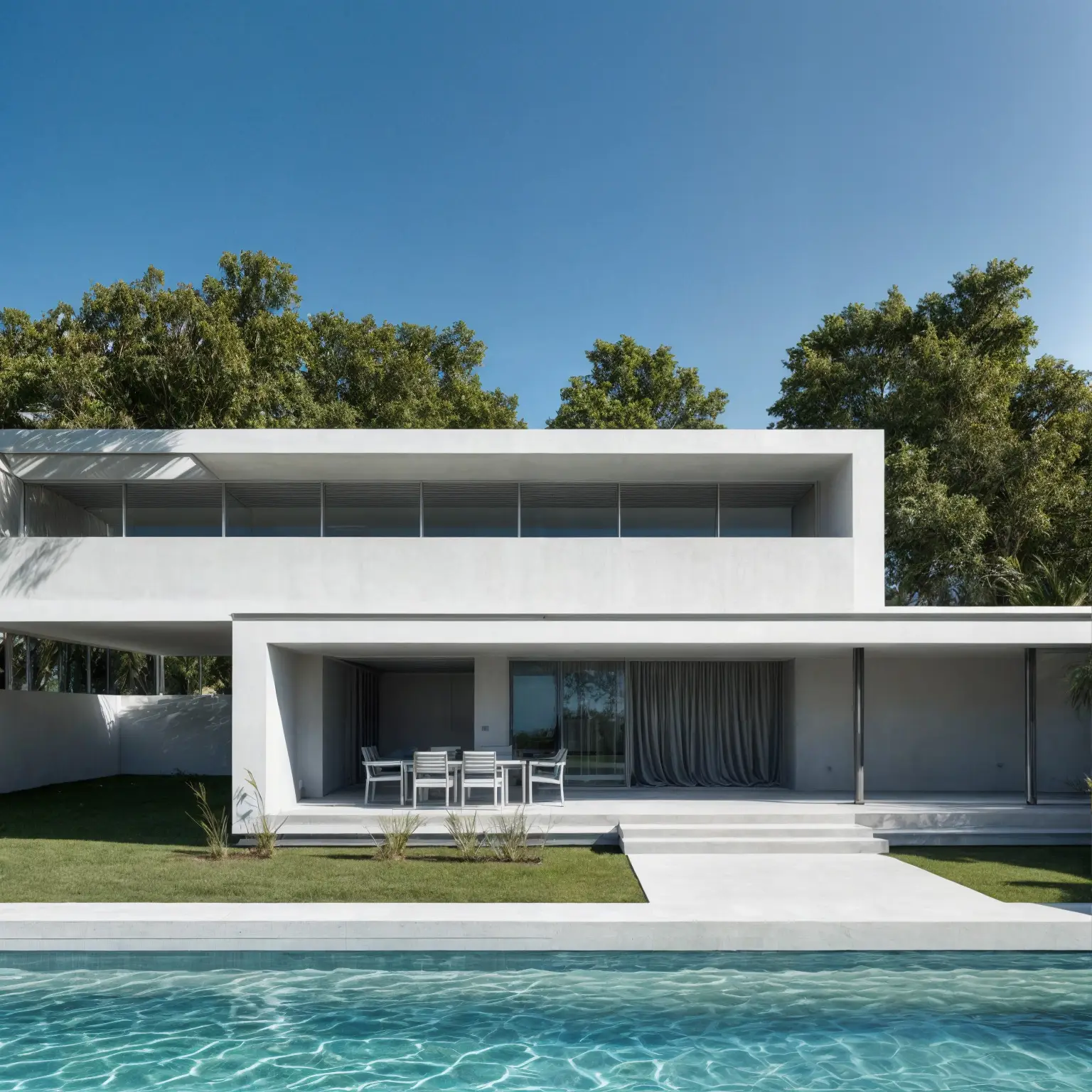Creating realistic daylight exterior renders is essential to bringing architectural projects to life, especially when showcasing luxurious villas in perfect weather conditions. At our 3D architectural rendering services, we specialize in creating breathtaking exterior renders that help potential buyers and architects visualize projects in the best possible light.
Here’s how you can create stunning daylight renders for a white villa under a sunny, blue sky.
1. Choose the Right Time of Day
When rendering an exterior scene, natural daylight plays a significant role in defining the mood and visual appeal of the project. The best time for rendering daylight scenes is during the morning or late afternoon, when the sun is lower in the sky, creating softer shadows and highlighting architectural details beautifully.
A direct midday sun can often result in harsh lighting, which may wash out the intricate details of a white villa. So, consider setting your lighting at around 9 AM or 4 PM, when the sunlight is warm, and shadows are elongated.
2. Optimize Your Sun and Sky Settings
For a crisp render, set the sun’s intensity to align with a typical sunny day. This ensures the shadows are defined but not overly sharp. Adjust the sky model to match the vibrancy of a clear blue sky, as it contrasts beautifully against the villa’s white walls, adding a pop of color to the scene.
For realistic results, utilize a High Dynamic Range Image (HDRI) for your sky dome. HDRI environments offer more accurate reflections and light distribution, ensuring that the lighting feels naturally balanced and harmonious with the architecture.
3. Control the Contrast and Highlights
One of the challenges in rendering a white villa is maintaining the correct balance between highlights and shadows. Too much exposure can cause the white surfaces to blow out, losing crucial details. On the other hand, too little exposure can flatten the image, making the villa appear dull.
Make sure to fine-tune the exposure settings to avoid overly bright areas. The key is to keep the bright portions crisp without burning out, while ensuring the shaded areas still retain depth and color.
4. Use Realistic Materials and Textures
For a realistic daylight render, your materials must react naturally to light. Ensure that the villa’s materials, particularly the exterior surfaces like stucco or plaster, have the correct reflectivity and bump maps. Proper texturing will allow the materials to react to the daylight realistically, enhancing the overall authenticity of the render.
Since white surfaces reflect more light, you’ll want to ensure that reflections from the environment, including the sky and surrounding greenery, appear on the villa’s exterior. Consider adding subtle dirt maps to make the material feel more grounded and authentic, especially for close-up shots.
